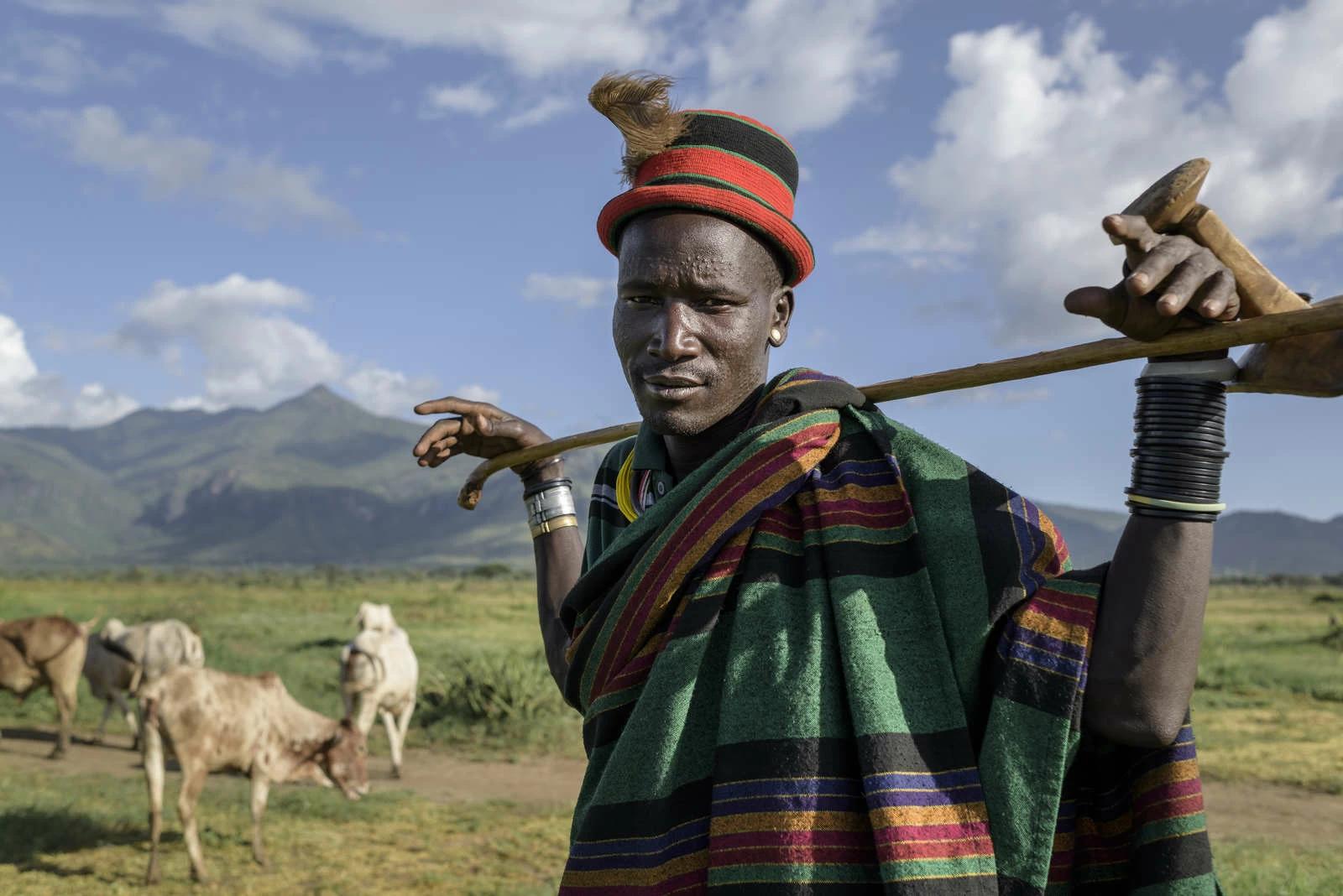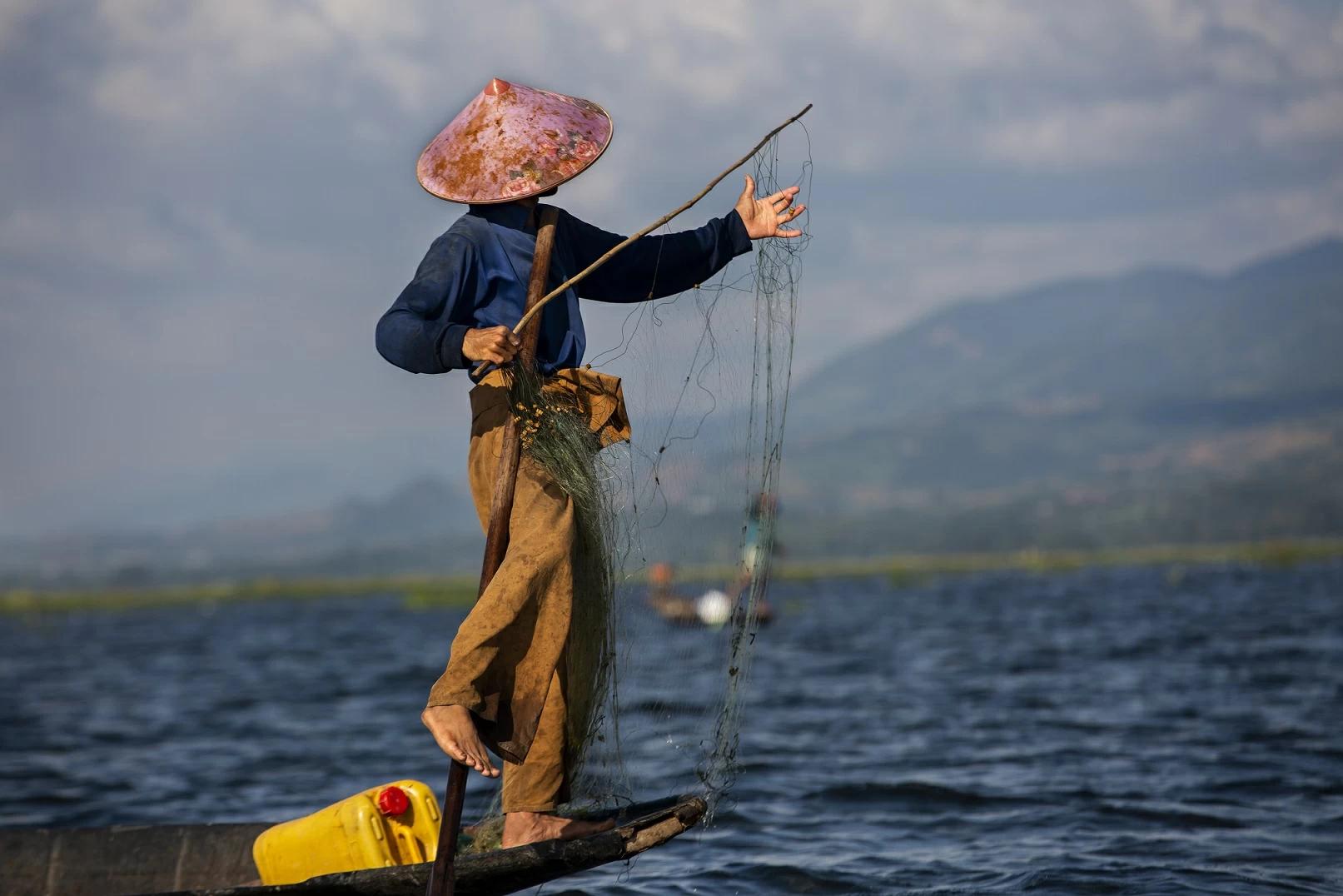8 Great Tips for Portrait Photography
Yvan Cohen
Wed Jan 13 2021

Who doesn’t fancy themselves as a portrait photographer? Capturing the essence of one’s subject, finding the right lighting, choosing a location: these are just some of the essential elements that combine to make a stunning portrait.
And who hasn’t felt that moment of magic when the human connection between photographer and subject transforms from a simple portrayal of somebody into a deeper expression of being.
Great portraits pack a punch.
They project themselves beyond the eyes and into the soul, touching our imaginations, and revealing aspects of photographer and subject simultaneously.
Before getting into the nitty-gritty of our tips, I’d like to just define what a portrait is or, more specifically, what it is not.
What is portrait photography?
A portrait is not a picture of person with whom you have no connection and didn’t interact at some level.
A picture without these elements is not so much a portrait as it is a photographic representation of the person. This is not to say it can’t be as beautiful and meaningful as any portrait in its own right.
A true photographic portrait, however, requires engagement with your subject; a human exchange that is influenced by the personality and presence of photographer and subject.
Part of the process is talking and directing your subject!
Keep in mind though that not all portraits are formally organized. Portraits can grow out of a chance encounter or a short exchange, especially if you’re shooting in a less predictable environment outside the framework of a formal sitting, like on the street.
With that, let’s jump to our tips:
 A Kelabit couple stand immersed in a river that passes through the village of Long Napir. A new dam project supported by the Malaysian government threatens to flood Long Napir and the surrounding forest areas which have been the homeland of the Kelabit and other tribal groups like the Penan since time immemorial. Photo and story credits to Yvan Cohen.
A Kelabit couple stand immersed in a river that passes through the village of Long Napir. A new dam project supported by the Malaysian government threatens to flood Long Napir and the surrounding forest areas which have been the homeland of the Kelabit and other tribal groups like the Penan since time immemorial. Photo and story credits to Yvan Cohen.
1. Location, location, location.
If you’re not shooting in a studio, then location is of prime importance. The location you choose will often say something important about your subject.
We often call portraits shot on location ‘environmental portraits’ because the subject is portrayed in a physical context (environment) that is relevant to who they are or what they do. So a baker portrayed in his or her bakery or a carpenter in their woodwork studio, and so on.
Think about the tonality of the background, as well as it’s texture and graphic look. If you shoot against a background with strong graphic lines, you’ll need to incorporate these into your composition to avoid distracting from your subject.
A tonally dark background is likely to make your subject stand out whereas a lighter tonal background may envelope the subject.
2. Understand your subject.
If you are planning a portrait session, get as much information about your subject as possible.
What kind of person are they?
Where do they hang out?
What job to they do?
What is their passion?
The better you understand your subject, the more likely you are to be able to create an image that reflects their being, resulting in a portrait that is engaging and alive.
If you have time, it’s a good idea to arrange a pre-shoot meeting to get to know your subject. Here’s some questions to get you thinking:
What type of person are you portraying?
Are they dynamic? Timid? Forthright?
What is their passion in life?
All of this information forms the mosaic of details that combine to describe the personality of your subject. In turn, giving you the essence of their being that you are trying to capture through your photography.
 A member of Thailand’s national wheelchair basketball team is portrayed here at a government sports facility in Cholburi province about an hour and a half to the east of the Thai capital Bangkok. All the players recount tales of the terrible accidents that left them without a limb or paralyzed. Photo and story credits to Yvan Cohen.
A member of Thailand’s national wheelchair basketball team is portrayed here at a government sports facility in Cholburi province about an hour and a half to the east of the Thai capital Bangkok. All the players recount tales of the terrible accidents that left them without a limb or paralyzed. Photo and story credits to Yvan Cohen.
3. Lighting and composition are everything.
OK, so it’s true of pretty much any photo you’ll ever take: lighting and composition are always everything.
When it comes to portrait photography, don’t let yourself become too consumed by the personality of your subject.
Step back.
Consider the structure of your image.
Lighting can determine mood so think about ambient light and how artificial light might enhance your image.
- Diffuse light, can create a soft romantic look.
- Harsh directional light can add drama.
- Low shadowy light can convey a more somber look.
If you’re shooting in daylight you might want to consider the timing of your shoot depending on what type of light you think will work best. And those gray days can be handy too – offering a chance for softer more diffuse lighting.
And of course think deeply about the composition of your image.
The angle you choose will affect how your subject is perceived.
- Shoot from lower than the eye-line and your subject will be given a dominant aspect, looming over the viewer.
- Position yourself higher than your subject and your subject may appear small and vulnerable.
- Crop tightly and you separate the subject from his or her environment, forcing the viewer to understand your image through the physical attributes of your subject, rather than in relation to their context.
When thinking about composition, take care to consider all the elements in your frame. A plastic bag hanging in the background a few meters behind your subject might appear insignificant the in the three dimensional world, but in the two dimensions of your portrait that innocuous bag might end up floating near your subject’s ear.
4. Try, try again.
Taking portraits is a process. If ever you get the chance to watch a portrait photographer at work, you will see how they work their subject.
Very often your first volley of images is a way of getting settled in. Your subject needs a chance to get used to the presence of you and your camera.
Give yourself enough time to work through the awkwardness that often defines the first moments of a portrait shoot!
The more you shoot, the more you can explore a wide variety of angles and settings, discovering which works best along the way.
You need to shoot a lot because it’s not always obvious during the shoot which images will work best. There are also subtle changes in mood and look in a subject’s eye that can make all the difference to the power of your portrait.
 Thai Olympic hopeful Yaowapa Boorapolchai, 19, is a leading Taekwondo athlete. Trained by a South Korean coach, Yaowapa’s supporters say she is a candidate for gold medal in the Olympics in Athens, Greece. Photo and story credits to Yvan Cohen.
Thai Olympic hopeful Yaowapa Boorapolchai, 19, is a leading Taekwondo athlete. Trained by a South Korean coach, Yaowapa’s supporters say she is a candidate for gold medal in the Olympics in Athens, Greece. Photo and story credits to Yvan Cohen.
5. Props make a difference.
Depending on your subject, props can provide important context, communicating essential information about the person you are photographing.
So if you’re photographing a musician, their instrument is probably a essential prop.
How many portraits have you seen of artists posing beside their easel, or hunters with their weapon and so on.
Uniforms and costumes are also great props that help define your subject and set the scene.
6. Remember, it’s not all about you.
The challenge for any photographer is to establish one’s own style. To develop a visual signature that is unique while not putting too much of yourself into the picture, especially when it comes to portraiture.
Your mission as a portraitist is to convey the essence of your subject. Allowing their ‘self’ to be expressed through your image.
Also consider, posing in front of a camera is unnatural and uncomfortable for most people, so your job is to help them forget about the camera and just be themselves. Try to make sure you put them at ease as much as possible.
7. Classic portrait lenses.
There are no hard and fast rules when it comes to lenses. Your choice will depend on your own personal style and vision.
The classic portrait lenses are perhaps the 35mm and 85mm.
35mm
A 35mm is a little wider than a standard 50mm, allowing you to include some context while still using a format that doesn’t distort and looks natural.
85mm
The 85mm is much more about separating your subject from the background. This slightly longer focal length lens is often used with a wide aperture to blur out the background and keep the focus firmly on the subject.
Of course, there’s no limit to the long lenses you can use. A 200 mm lens can give great effects too.
 American Yoga teacher Adrian Cox poses for a picture in Bangkok. Photo and story credits to Yvan Cohen.
American Yoga teacher Adrian Cox poses for a picture in Bangkok. Photo and story credits to Yvan Cohen.
8. Learn from the masters.
It’s always great to learn from the masters of any art form.
Take time to study the greatest portrait photographers of our time, masters like Richard Avedon, Annie Liebovitz, Irving Penn, Herb Ritts and many, many more.
Feed your creativity by being inspired by others who have gone before you, so that you are measuring your own work and creativity against the highest of standards.
Written by Yvan Cohen | Yvan has been a photojournalist for over 30 years. He’s a co-founder of LightRocket and continues to shoot photo and video projects around South East Asia.
Featured image by Jorge Fernández Garcés
To read more helpful articles on photography, check out our blog page.
Join our growing photographer community at LightRocket and get powerful archive management and website building tools for free!


